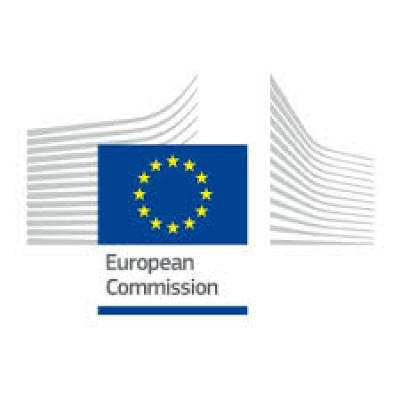
Innovative Financing Schemes for Sustainable Energy Investments
Details
Description
Call Updates
Mar 20, 2023 3:30:27 PM
CALL UPDATE: FLASH EVALUATION RESULTS
EVALUATION results
Published: 17.05.2022
Deadline: 16.11.2022
Available budget: 98 000 000 EUR
The results of the evaluation are as follows:
Call LIFE-2022-CET-INNOFIN:
Number of proposals submitted (including proposals transferred from or to other calls): 13
Number of ineligible proposals: 3
Number of above-threshold proposals: 2
Total budget requested for above-threshold proposals: EUR 2.917.074,57
We recently informed the applicants about the evaluation results for their proposals.
For questions, please contact CINEA-LIFE-CET@ec.europa.eu.
Nov 21, 2022 3:20:18 PM
On 16 November 2022, a total of 225 proposals were submitted in response to the following topics: LIFE-2022-CET-INNOFIN: 13 proposals
Jun 30, 2022 5:24:04 PM
We want to draw your attention to the possibility to get support from your National Contact Point (European National Contact Points (europa.eu)). To facilitate such support, it would be beneficial to add your National Contact Point (NCP) under the “Participants” step of the application, by clicking on “Add contact”. Then, Under “Project role”, use the option “Contact person” and add your NCP’s data.
https://cinea.ec.europa.eu/programmes/life/history-life/life-contacts/european-national-contact-points_en
May 17, 2022 9:57:57 AM
The submission session is now available for: LIFE-2022-CET-INNOFIN(LIFE-PJG)
Innovative financing schemes for sustainable energy investments
TOPIC ID: LIFE-2022-CET-INNOFIN
Programme: Programme for Environment and Climate Action (LIFE)
Work programme part: LIFE-2021-2024
Call: LIFE-2022-CET (LIFE-2022-CET)
Work programme year: LIFE-2021-2024
Type of action: LIFE-PJG LIFE Project Grants
Type of MGA: LIFE Action Grant Budget-Based [LIFE-AG]
Deadline model: single-stage
Opening date: 17 May 2022
Deadline date: 16 November 2022 17:00:00 Brussels time
The topic aims to set up innovative financing schemes for investments in sustainable energy in the form of energy efficiency and small-scale renewable energy sources.
In view of the ambitious EU climate and energy policy, including dedicated targets for the years 2030 and 2050, significantly enhanced investments will be needed. This is also clearly reflected in the European Green Deal Investment Plan[1], which aims at mobilising at least EUR 1 trillion of sustainable investments over the course of 10 years for Europe to become the first climate-neutral continent by 2050. This requires significant investment from both the public and the private sector. Public finance needs to lead the way, private actors need to provide the scale.
In this context, also the level of sustainable energy and, in particular, energy efficiency investments needs to be ramped up significantly. This requires the mobilisation of both public and private funding sources, with a specific emphasis on progressively maximising the leverage ratio of private to public finance. This is in line with the Smart Finance for Smart Buildings initiative[2], which aims at using public funds more effectively, the “Renovation Wave” envisaged by the European Green Deal[3] to address the essential need to substantially enhance building energy efficiency, and the REPowerEU plan[4] to phase out EU dependence on fossil fuel imports.
In order to create the conditions for adequate supply of private finance for sustainable energy investments and enhanced engagement of private investors, there is a need to set up and roll out innovative financing schemes at regional or national level, which can be expanded and/or replicated at scale. These schemes have to be adapted to the specificities of sustainable energy investments and, in particular, to the particularities of energy efficiency investment profiles[5], and to be aligned with or go beyond the relevant EU Sustainable Finance policy and legislation[6] and specifically the related EU Taxonomy[7].
Scope:Proposals should address the set-up of innovative financing schemes leveraging private finance for sustainable energy investments, with a dedicated and clear focus on energy efficiency. The financial solution should be operational by the end of the action, whereas the related investments may be implemented after project completion. Therefore, proposals should foresee necessary testing and exploitation activities during the action.
The financing schemes can involve various types of organisations and ownership structures, as well as diverse financing structures, including, but not limited to:
- Models applying different financing instruments such as tailored grants, equity, debt, mezzanine financing, refinancing mechanisms, guarantees or other de-risking instruments (including specialised risk-sharing facilities, insurances, etc.).
- Specific finance models for the energy retrofit of buildings in line with the “Renovation Wave”, addressing property or rental markets and, in particular, public buildings (including social housing) and deep energy renovation. This includes e.g. tailored financial solutions based on energy service/performance contracting, addressing relevant accounting and refinancing issues, or various on-bill and on-tax-financing schemes.
- Schemes targeting the secondary market, including specialised securitization vehicles and green bond schemes.
- Local investment structures, including citizen financing (e.g. crowdfunding) for energy efficiency and other forms focusing on the role of prosumers or applying complementary local “currencies” at community scale to reinforce short circuits and local supply chains, including smart contracts.
- Tailored financing solutions integrating existing market-based instruments relevant for energy efficiency (e.g. carbon finance instruments, including those under the European Emissions Trading System; CO2/energy taxes; tradable certificate schemes and energy efficiency obligations e.g. under Art. 7 of EED[8]; etc.) and/or an adequate monetization of multiple benefits of energy efficiency; or
- Dedicated schemes based on brokers, as well as aggregators or clearing houses (at regional or national level), which facilitate matching of demand and supply of energy efficiency finance, blending of different public and/or private funding sources, and/or project development.
Proposals should take into account all the following elements:
- Address the establishment of innovative, operational financing schemes for sustainable energy investments. In this context, they can draw on and/or upscale other innovative financing schemes for sustainable energy investments which have demonstrated to be effective;[9]
- Address the provision of finance as well as the structuring of demand, in particular at regional and national level;
- Define the target region(s) and sector(s) (e.g. buildings, energy-intensive industries, insurance sector etc.);
- Clarify how the proposed scheme is tailored and innovative for the targeted region(s) and market segment(s);
- Justify how the proposed scheme complements and is additional to already available funding;
- Clearly demonstrate the market potential, as well as business case and financial viability of the proposed scheme (including e.g. investment sizes targeted, transaction and management costs, expected energy/cost savings and other returns, etc.);
- Plan replication and/or rollout of the scheme envisaged (e.g. at national/regional level); and
- Ensure and explain alignment with the relevant EU Sustainable Finance policy and legislation and, in particular, the related EU Taxonomy, or clarify how they go beyond.
The Commission considers that proposals requesting a contribution from the EU of up to EUR 1.5 million would allow the specific objectives to be addressed appropriately. Nonetheless, this does not preclude submission and selection of proposals requesting other amounts.
Expected Impact:Proposals should:
- Deliver adequately tailored innovative financing schemes that are operational and ready to finance sustainable energy and, in particular, energy efficiency investments.
- Contribute to the wide-spread implementation of the relevant EU Sustainable Finance policy and legislation and, in particular, the related EU Taxonomy, and the achievement of the underlying objectives.
Proposals should quantify their impacts using the indicators listed below, where relevant, as well as other project-specific performance indicators:
- Investments in sustainable energy triggered by the project (cumulative, in million Euro).
- Primary energy savings triggered by the project (in GWh/year).
- Renewable energy generation triggered by the project (in GWh/year).
- Reduction of greenhouse gases emissions (in tCO2-eq/year).
The impacts of the proposals should be demonstrated during the project and within 5 years after the project lifetime.
[1]Communication from the Commission to the European Parliament, the European Council, the Council, the European Economic and Social Committee and the Committee of the Regions Sustainable Europe Investment Plan European Green Deal Investment Plan of 14.01.2020 COM(2020) 21 final
[2]Communication from the Commission to the European Parliament, the Council, the European Economic and Social Committee, the Committee of the Regions and the European Investment Bank Clean Energy for All Europeans of 30.11.2016, COM(2016) 860 final ANNEX 1 Accelerating clean energy in buildings.
[3]Communication from the Commission to the European Parliament, the European Council, the Council, the European Economic and Social Committee and the Committee of the Regions The European Green Deal of 11.12.2019 COM(2019) 640 final
[4]Communication from the Commission of 8.3.2022 to the European Parliament, the European Council, the European Economic and Social Committee and the Committee of the Regions, REPowerEU: Joint European Action for more affordable, secure and sustainable energy, COM(2022) 108 final
[5]The Energy Efficiency Financial Institutions Group (EEFIG) (https://ec.europa.eu/eefig/index_en) analyses drivers and barriers for energy efficiency investments in buildings and industry, including adequate financing instruments.
[6]https://ec.europa.eu/info/business-economy-euro/banking-and-finance/sustainable-finance/overview-sustainable-finance_en.
[7]https://ec.europa.eu/info/business-economy-euro/banking-and-finance/sustainable-finance/eu-taxonomy-sustainable-activities_en.
[8]Directive 2012/27/EU of the European Parliament and of the Council of 25 October 2012 on energy efficiency, amending Directives 2009/125/EC and 2010/30/EU and repealing Directives 2004/8/EC and 2006/32/EC as amended by Directive (EU) 2018/2002 of the European Parliament and of the Council of 11 December 2018, EUR-Lex - 32018L2002 - EN - EUR-Lex (europa.eu)
[9]Such schemes may originate outside or inside the European Union, including, for example, those developed and implemented under project development assistance (PDA) facilities under the Horizon 2020 (H2020) and Intelligent Energy Europe (IEE) programmes (including H2020/MLEI PDA or ELENA-EIB). In this context, projects may also apply standardisation tools and processes designed with a view to reducing transaction costs and enhancing investor confidence, like e.g. such developed by various H2020 or IEE projects or the EEFIG Underwriting Toolkit.


